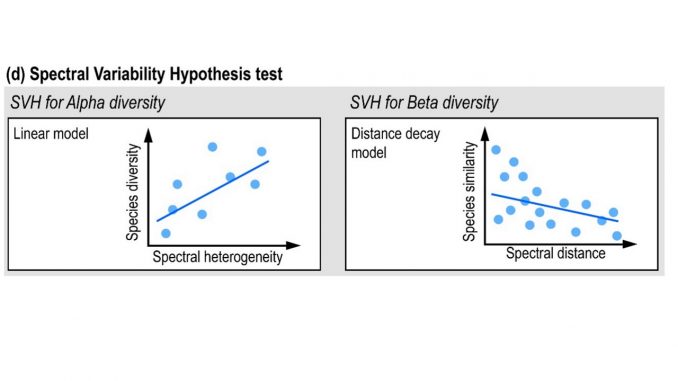Combining field collected and remotely sensed (RS) data represents one of the most promising approaches for an extensive and up-to-date ecosystem assessment. We investigated the potential of the so called spectral variability hypothesis (SVH) in linking field-collected and remote-sensed data in Mediterranean coastal dunes and explored if spectral diversity provides reliable information to monitor floristic diversity, as well as the consistency of such information in altered ecosystems due to plant invasions. We analyzed alpha diversity and beta diversity, integrating floristic field and Remote-Sensing PlanetScope data in the Tyrrhenian coast (Central Italy). We explored the relationship among alpha field diversity (species richness, Shannon index, inverse Simpson index) and spectral variability (distance from the spectral centroid index) through linear regressions. For beta diversity, we implemented a distance decay model (DDM) relating field pairwise (Jaccard similarities index, Bray–Curtis similarities index) and spectral pairwise (Euclidean distance) measures. We observed a positive relationship between alpha diversity and spectral heterogeneity with richness reporting the higher R score. As for DDM, we found a significant relationship between Bray–Curtis floristic similarity and Euclidean spectral distance. We provided a first assessment of the relationship between floristic and spectral RS diversity in Mediterranean coastal dune habitats (i.e., natural or invaded). SVH provided evidence about the potential of RS for estimating diversity in complex and dynamic landscapes.
Read the paper here https://www.mdpi.com/2072-4292/13/10/1928

